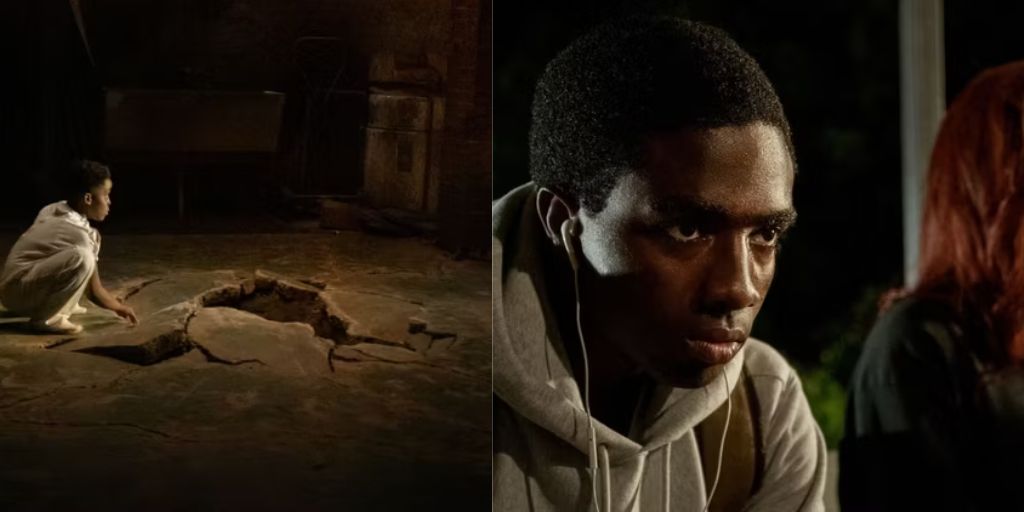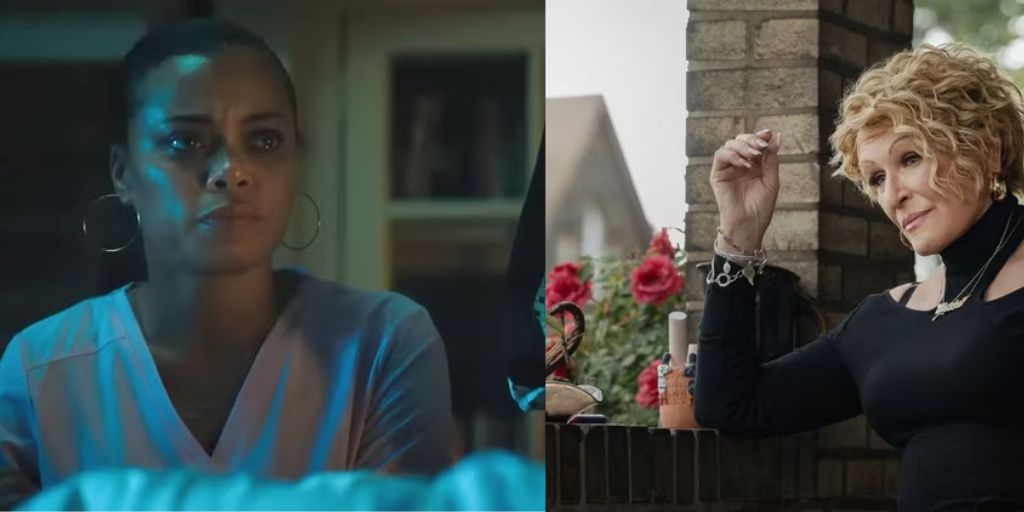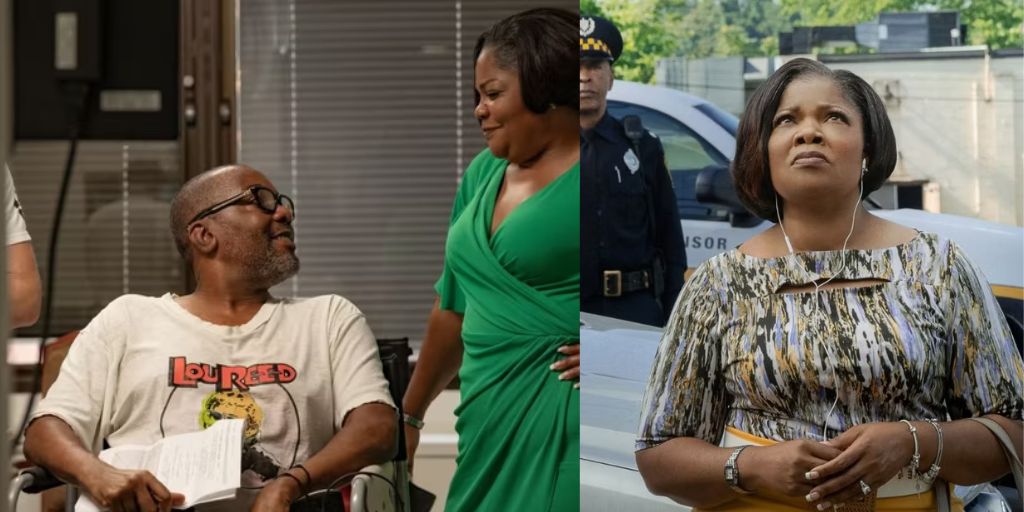Lee Daniels has a long history of telling moving stories centered on Black experiences, and his newest project, The Deliverance, continues that tradition. This time, however, Daniels ventures into the horror genre with his first directorial effort in this field.
Working with writers David Coggeshall and Elijah Bynum, Daniels creates a film that blends supernatural elements with deep family drama. The story draws inspiration from classic exorcism films, referencing works like The Exorcist: Believer by David Gordon Green and The Conjuring by James Wan.
Though at times it feels heavily influenced by these films, The Deliverance still manages to carve out its own identity. The film is set in the semi-suburban outskirts of Pittsburgh, evoking the eerie atmosphere of Cabrini-Green from Bernard Rose’s Candyman.
While The Deliverance may not be as aggressively frightening as some other horror films, Daniels skillfully builds tension through family conflict and the looming threat of possession.
This slow-burn approach effectively sets the stakes for a dramatic and chilling final act, proving Daniels’ ability to handle both the human and supernatural elements of the story.
What Is ‘The Deliverance’ About?
The Deliverance is loosely based on real-life paranormal events experienced by Latoya Ammons in Gary, Indiana. Latoya, her mother, and her three children claimed to have been haunted by evil forces after moving into a house that became notorious for its supposed demonic activity.
This home was later purchased by celebrity ghost hunter Zak Bagans for his 2014 documentary Demon House. In the film, Daniels adapts this story, focusing on Ebony (played by Andra Day), her ailing mother Alberta (played by Glenn Close), and her three children.

The family moves into a home in Pittsburgh where strange and disturbing events begin to unfold. Right from the beginning, things feel wrong: flies swarm the basement, a foul odor lingers, and Ebony’s youngest child, Andre (Anthony B. Jenkins), starts talking to an imaginary friend.
The family’s peace is shattered by these occurrences, which grow more sinister over time. Ebony’s past complicates matters, as she faces skepticism from her social worker, Cynthia Henry (Mo’Nique), who doubts Ebony’s claims of supernatural happenings. Cynthia’s disbelief is worsened by the family’s troubled history, including the abusive relationship between Ebony and her mother.
A large portion of the first half of the film is dedicated to examining Ebony’s character. Andra Day delivers a powerful performance as Ebony, a woman struggling under the weight of poverty and the responsibility of raising her children. Her difficult circumstances are portrayed honestly, without sugar-coating her flaws.
Ebony drinks heavily, and in one heated moment, she even strikes her eldest son Nate (played by Caleb McLaughlin) during an argument. However, Daniels also shows the loving, protective side of Ebony. She is fiercely dedicated to her family, paying healthcare bills for her mother and juggling multiple roles as both a mother and provider.
The film raises important questions about whether people like Ebony, who have faced trauma and hardship, are forever damaged or if they can overcome their past. This theme is explored both through the supernatural lens and the human struggles the characters endure. Ebony’s fight is not just against evil spirits, but also against a society that judges and seeks to take her children away.
Daniels draws on themes explored in other films that highlight Black experiences, such as Get Out, The Blackening, and Bad Hair. Though The Deliverance is primarily a horror film, it also deals with the universal fear of losing control and being misunderstood, with Day’s performance adding layers to these themes.
Her character is burdened by race, poverty, and a complicated relationship with her white mother. Glenn Close portrays Alberta, a woman who has found religion but also wields the power of her privilege. Alberta’s interactions with her family show how deeply the racial and generational tensions run.
Daniels challenges the audience to consider whether Alberta’s behavior, and the power dynamics within the family, are a result of her background or something more malicious. As a character, Ebony is flawed but undeniably human, making her journey all the more compelling.
She is a mother fighting not just to protect her children from supernatural forces, but also from a world that views her as unworthy.
‘The Deliverance’ Plays Around With Familiar Horror Elements
As The Deliverance progresses, the supernatural elements become more pronounced, with typical horror imagery becoming a central part of the narrative. The film plays on familiar tropes, such as possessions, demonic traps, and unexplainable behavior.
Ebony’s children exhibit increasingly bizarre and disturbing behavior, which others write off as emotional outbursts or attention-seeking. These moments create a sense of unease, but the film also builds tension by making the audience question whether the possession is real or a manifestation of the family’s trauma.

The introduction of a religious figure who performs exorcism rituals feels typical of the genre, and Ebony’s initial reluctance to accept help adds to the suspense. Despite these familiar elements, Daniels focuses more on the family dynamics than on the supernatural horror, using the genre conventions to highlight deeper, more personal struggles.
The film is visually striking, with some powerful religious imagery that adds to the horror. Scenes of levitations, stigmata, and demonic possession are disturbing and effective in conveying the presence of evil. However, some of the special effects, particularly the digital alterations to Andre’s face, feel less convincing and can detract from the tension.
The film is a mix of standard horror elements, with some scenes working better than others. As the story moves toward its chaotic finale, there is a sense of everything happening at once.
The film’s conclusion brings together all the supernatural elements in a fast-paced, intense climax, but it can feel overwhelming at times. Nonetheless, the emotional weight of Ebony’s struggle grounds the story, even as the supernatural chaos unfolds.




